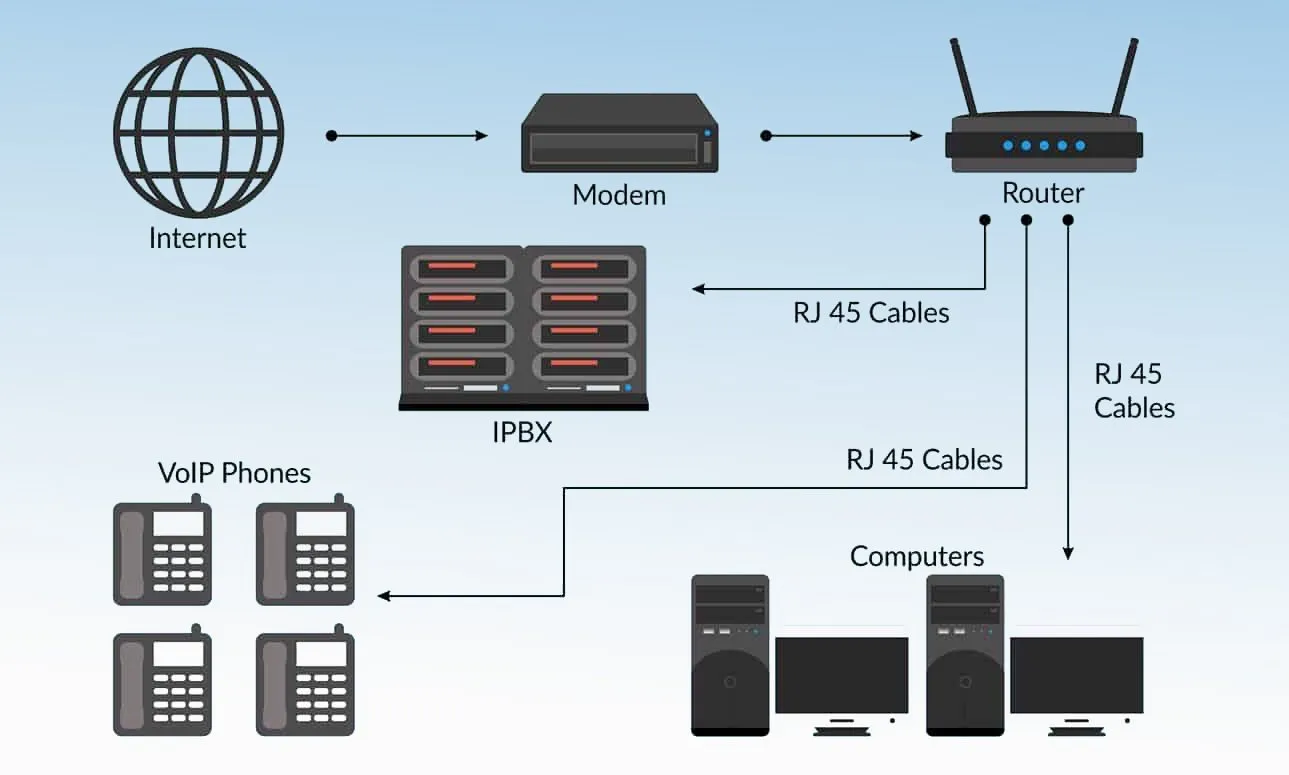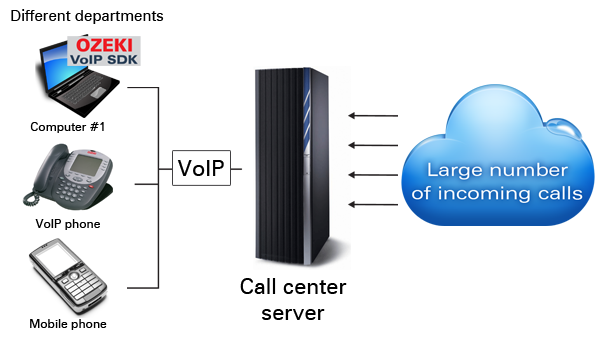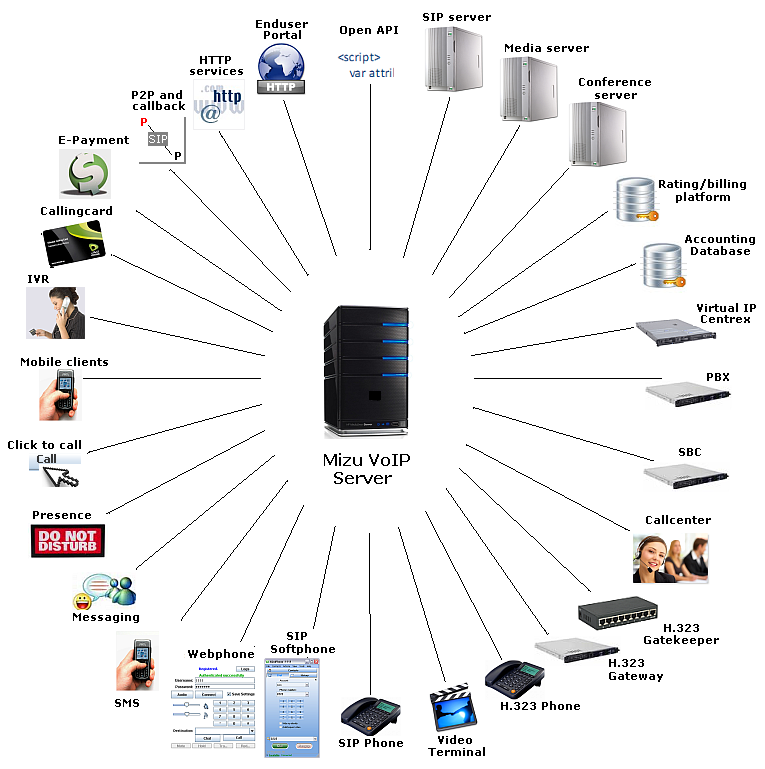Ensuring Seamless VoIP Communication, Best Practices for Server Monitoring and Management
In the digital age, Voice over Internet Protocol (VoIP) has become a crucial communication technology for businesses. To ensure smooth and uninterrupted VoIP communication, effective server monitoring, management, and administration are essential. This article will explore the best practices and strategies for optimizing VoIP server performance, enhancing reliability, and overcoming challenges.
Understanding VoIP Server Monitoring:
VoIP server monitoring is a critical aspect of ensuring reliable and high-quality communication. By monitoring various performance metrics, organizations can proactively identify and resolve issues before they impact the user experience. This section provides an overview of the importance of VoIP server monitoring, key performance metrics to track, proactive monitoring techniques, and available monitoring tools and solutions.
VoIP server monitoring is vital because it enables organizations to detect and address potential problems that could disrupt communication. By continuously monitoring metrics such as call quality, latency, packet loss, and jitter, organizations can identify issues and take timely corrective actions.
Key performance metrics to monitor include call completion rates, MOS (Mean Opinion Score), jitter, latency, and packet loss. These metrics provide insights into the overall quality of VoIP calls and help identify areas for improvement.
Proactive monitoring techniques involve setting up automated systems to regularly monitor performance metrics, generate alerts in case of anomalies, and conduct regular health checks of the VoIP servers. This proactive approach helps organizations address potential issues before they affect users.
Numerous monitoring tools and solutions are available in the market. These tools provide real-time monitoring, reporting, and analytics capabilities, allowing organizations to gain valuable insights into their VoIP infrastructure. Some popular tools include network monitoring software, call quality monitoring solutions, and log analysis tools.
In conclusion, understanding VoIP server monitoring is crucial for maintaining a high-quality communication environment. By monitoring key performance metrics, employing proactive monitoring techniques, and leveraging appropriate monitoring tools, organizations can ensure that their VoIP infrastructure performs optimally and delivers a seamless communication experience to users.

VoIP Server Management Strategies:
Effective management of VoIP servers is essential to optimize performance, enhance reliability, and ensure smooth communication. This section explores key strategies for VoIP server management, including capacity planning, redundancy and failover solutions, quality of service (QoS) optimization, bandwidth management, and security measures.
Capacity planning plays a crucial role in VoIP server management. Organizations need to accurately assess their current and future needs to ensure their servers can handle the expected call volumes. By considering factors such as concurrent call capacity, bandwidth requirements, and anticipated growth, organizations can avoid performance bottlenecks and ensure a seamless communication experience.
Implementing redundancy and failover solutions is vital for mitigating the risk of service disruptions. By deploying redundant hardware, such as backup servers or session border controllers, organizations can ensure continuity in case of hardware failures or network outages. Failover mechanisms automatically redirect traffic to redundant servers, minimizing downtime and preserving communication integrity.
Optimizing Quality of Service (QoS) is crucial for prioritizing VoIP traffic and maintaining call quality. By implementing QoS mechanisms, such as traffic shaping or prioritization, organizations can minimize latency, jitter, and packet loss, ensuring a reliable and consistent user experience.
Bandwidth management is essential to allocate network resources effectively. By implementing techniques like bandwidth shaping or throttling, organizations can prevent network congestion and ensure sufficient bandwidth for VoIP traffic. Prioritizing VoIP packets over other data types helps maintain call quality even in high-traffic scenarios.
Overcoming VoIP Server Challenges:
VoIP server challenges can pose significant obstacles to achieving seamless communication. This section highlights common challenges and explores strategies to overcome them. These challenges include network congestion and latency, packet loss and jitter, firewall and NAT traversal issues, VoIP server scalability, and interoperability and compatibility concerns.
Network congestion and latency can impact VoIP call quality. Congested networks result in increased latency, leading to delays and disruptions in real-time communication. To overcome this challenge, organizations can implement bandwidth management techniques, prioritize VoIP traffic through Quality of Service (QoS) settings, and optimize network infrastructure to reduce latency.
Packet loss and jitter occur when network conditions cause data packets to be dropped or arrive out of order. This leads to degraded call quality and disruptions. To address this challenge, organizations can implement error correction mechanisms, prioritize VoIP packets over other traffic, and optimize network settings to minimize packet loss and jitter.
Firewalls and Network Address Translation (NAT) can introduce complications for VoIP communication. These technologies often block or modify VoIP traffic, causing connectivity issues. To overcome this challenge, organizations can configure firewalls to allow VoIP traffic and employ techniques like Session Initiation Protocol (SIP) Application Layer Gateway (ALG) to facilitate NAT traversal.
VoIP server scalability is crucial for accommodating growing call volumes and user demands. Insufficient server resources can result in performance degradation and call failures. Organizations can overcome this challenge by implementing scalable server architectures, load balancing mechanisms, and cloud-based solutions to handle increased traffic and ensure smooth communication.
Interoperability and compatibility concerns arise when different VoIP systems and devices use varying protocols and codecs. This can lead to communication difficulties between different platforms. To address this challenge, organizations should ensure compatibility between VoIP systems, employ transcoding mechanisms to convert between different codecs, and conduct thorough compatibility testing.
[caption id="attachment_236893" align="alignnone" width="600"] VoIP Server Challenges[/caption]
VoIP Server Challenges[/caption]
Future Trends in VoIP Server Technology:
As technology advances, VoIP server technology continues to evolve, offering new possibilities and opportunities. This section explores some of the emerging trends that are shaping the future of VoIP server technology, including the integration of artificial intelligence (AI), automation and self-healing mechanisms, cloud-based solutions, and virtualization and containerization.
The integration of artificial intelligence (AI) in VoIP server technology holds great potential. AI algorithms can analyze vast amounts of data collected from VoIP systems, identifying patterns and trends to optimize server performance, predict and prevent potential issues, and enhance call quality. AI-powered features like voice recognition and natural language processing can further enhance the user experience.
Automation and self-healing mechanisms are becoming increasingly prevalent in VoIP server technology. Automated systems can monitor server health, detect anomalies, and initiate corrective actions in real-time. Self-healing mechanisms can automatically resolve common issues without human intervention, reducing downtime and improving overall system reliability.
Cloud-based solutions are gaining popularity in the VoIP server space. Cloud-based VoIP systems offer scalability, flexibility, and cost-effectiveness. By leveraging cloud infrastructure, organizations can easily scale their server resources based on demand, ensure high availability, and simplify server management and maintenance.
Virtualization and containerization technologies are transforming the way VoIP servers are deployed and managed. Virtualization allows organizations to run multiple virtual instances of VoIP servers on a single physical server, optimizing resource utilization and simplifying server administration. Containerization enables lightweight and portable deployment of VoIP server components, facilitating rapid scaling and deployment across different environments.

Conclusion:
In conclusion, ensuring seamless VoIP communication requires a comprehensive approach to server monitoring, management, and administration. By understanding the importance of VoIP server monitoring and tracking key performance metrics, organizations can proactively identify and address issues to maintain high call quality. Implementing effective VoIP server management strategies such as capacity planning, redundancy solutions, QoS optimization, bandwidth management, and robust security measures enhances performance, reliability, and user experience.
Overcoming VoIP server challenges such as network congestion, packet loss, firewall issues, scalability concerns, and interoperability problems requires strategic solutions. Organizations can optimize network infrastructure, prioritize VoIP traffic, employ NAT traversal techniques, adopt scalable architectures, and ensure compatibility between different systems to mitigate these challenges.
Leveraging Open Source in ICT





